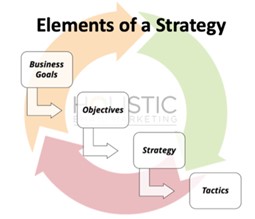Economic bad news refocuses attention on strategy over tactics
The latest round of tech layoffs hit home recently. In a call with a marketing team, I discovered half the team had been quietly laid off the week before. It seems every week brings news that a past colleague or fellow member of the email community is looking for new opportunities, as the saying goes. And more layoffs might be in the offing.
In the grander scheme of things, the jobs lost at my client's company were just a drop in the bucket of layoffs worldwide in January. But now the team members who were left are scrambling to reorganize and recover while in the midst of grieving their losses.
In the meantime, email campaigns have to go out. Tests have to run. Results have to be analyzed, automations monitored, future campaigns planned.
Under these pressures, it's tempting to look for ways to keep the marketing machine going any way possible, and that can lead to shortcuts or delays in essential tasks. But you could be courting disaster if you abandon sound marketing practices in the process.
But where do you start? As always, having an objective-based strategy can help you weather distressing changes.
Strategy helps stressed-out teams keep working
This stressful business time has one potential up-side. If your team has a strong strategic plan – written down, accessible to everyone – you can rely on this guide to keep your email operations on track.
Let's say your marketing team has lost a crucial email player, such as your email manager or team leader. On many teams this is the person who develops the roadmaps for campaigns that specialists or other email workers carry out.
In the wake of your team leader's departure, the remaining team members should go over the strategy and campaign planning to be sure nothing is overlooked in these next few weeks of reorganization and restructuring.
Now let's say you have suddenly found yourself as the new email lead. One of your first moves should be to look for any strategic guidance your predecessor might have left. This could be a bit of a challenge, as many email teams don't create a paper trail of strategic planning.
I'm not being pessimistic with this claim. In our 2018 Email Marketing Vendor Satisfaction Report, we discovered only 45% of marketing teams had a written strategic plan.
Quick guide to strategic planning
Creating a strategic plan might be the last thing on your team's agenda after a layoff or some other business disruption. But now might be the best time either to craft a new plan or to update your previous plan to align with your company's newest business objectives.
Follow these four steps in order to create a workable marketing strategy that will support your business goals:
- Set your business goals. Most likely it will be a company-wide revenue target, such as a 20% increase in profits for the year.
- Set your marketing objectives to support the goal. These are tied to different stages in the customer lifecycle, such as higher sales, more new customers or lower churn.
- Create your strategies to achieve your objectives. These can be finding new ways to attract new customers, sell more products at full price or reduce the time lag from awareness to action.
- Choose tactics that will carry out your strategies. Here's where you get down to the nitty-gritty, such as improved opt-in features, cart- and browse-abandonment programmes, reactivation plans and real-time content.

Is your workflow up to date?
When I talked to my contact on the marketing team that had just lost several key players, she described how the remaining team members had to work through their shock and grief to figure out who was doing what, what jobs had to be covered immediately, which key email decisions were still hanging and what could hold off until the dust settled.
That's why a documented workflow is another helpful tool especially when your team goes through a sudden change, as it shows all the steps from campaign conception to execution and follow-up. Workflow documentation is essential for efficient email design and managing a complex system of marketing automation.
Many marketing teams learned this key lesson in the early days of the COVID-19 pandemic. Surprise layoffs and the abrupt shift to remote work in 2020 exposed weaknesses in the day-to-day email workflow. Many teams had to overhaul their operations to accommodate the new realities.
Any work you did back in 2020 will pay dividends now. You can update it quickly to reflect your new team structure. If you didn't write it down, though, please invest some time in that documentation as another way to keep operations running smoothly.
This way, you won't skip any key steps, and everybody should know who's responsible for what, even if they're new to the team.
Planning and organization can keep email producing through chaos
One common thread running through my conversations about mass layoffs is how little guidance companies give their remaining employees. As distressing as that can be, it's also your opportunity to take the reins so you can determine your own destiny.
Losing valuable colleagues with little or no warning is hard. Been there, had to work through it! You have to take on extra work to keep the machinery operating, and here I am telling you to do more.
But any time you can invest in thinking through what you have to achieve this year and how you'll do it will pay off with more efficient operations, maybe a little less stress and a greater chance that you'll achieve your goals despite the massive monkey wrench your company threw into your operation.
In the end, it's all about working smart, even with reduced budgets and resources. You don't need a catastrophic event like a layoff or a surprise budget chop to formalize strategy and workflows – in fact, don't!
Many of the clients we're working with now are looking for email audits to discover what they're overlooking, to reveal low-hanging fruit they can harvest now for quick returns and to have us develop robust strategies to take advantage of what the audit turns up. They might have widely varying needs, but they share the same goal:
They realize the better they perform, the sooner they can justify added resources and increased budgets or stave off cutbacks. So they're investing in things like email audits and strategic planning – things they might once have considered "nice to haves" but have suddenly become "must-haves" in today's precarious economic climate.
In the end, planning now means you'll be prepared for the next "earth-shattering kaboom" as our colleague Ryan Phelan wrote about here on the Only Influencers blog.
 Photo by Felix Mittermeier on Unsplash
Photo by Felix Mittermeier on Unsplash

 How to resolve AdBlock issue?
How to resolve AdBlock issue? 